HH-60
• Special Operations • All weather • Coast Guard rescue

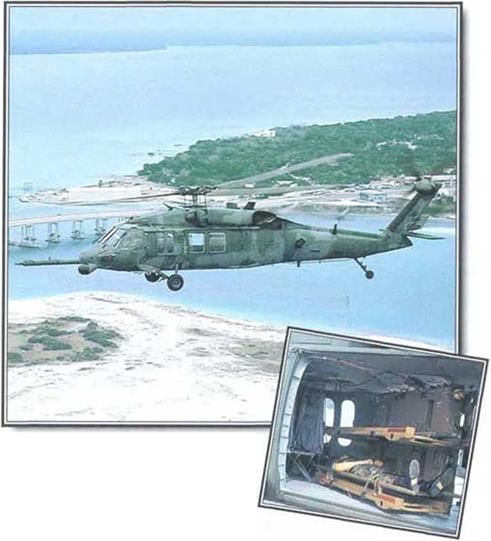 The HH-60 is an angel of mercy. This helicopter flies from ships’ decks and shore bases to bring salvation to those in peril. In disaster and in war, the Navy’s HH-60H Rescue Hawk and the Coast Guard’s HH-60J Jayhawk can mean the difference between life and death. Not surprisingly. HH-60 rescue flying is one of the most difficult missions pilots can undertake. A secondary role is supporting operations by the Special Forces.
The HH-60 is an angel of mercy. This helicopter flies from ships’ decks and shore bases to bring salvation to those in peril. In disaster and in war, the Navy’s HH-60H Rescue Hawk and the Coast Guard’s HH-60J Jayhawk can mean the difference between life and death. Not surprisingly. HH-60 rescue flying is one of the most difficult missions pilots can undertake. A secondary role is supporting operations by the Special Forces.
TExtended range

 The role of retrieving downed aircrew often involves flying long distances: tho HH-60 is lifted with a refuelling boom, allowing contact with an HC-130 tanker.
The role of retrieving downed aircrew often involves flying long distances: tho HH-60 is lifted with a refuelling boom, allowing contact with an HC-130 tanker.
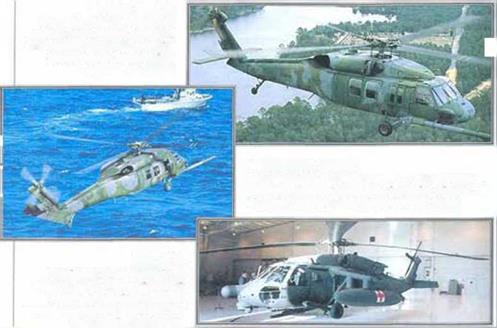 Credible Hawk ►
Credible Hawk ►
One of the first developmental models of the project, a UH-60A is seen here testing the refuelling boom. Further modifications improved the variant.
◄ Anywhere, anytime
The rescue role has made the HH-60 an extremely adaptable platform. Even when in service with the US Air Force, missions often take place over water.
Dust Off ►
A derivative of the HH-60 is the UH-60O. which is a specialised air ambulance version capable of accommodating nino strclchors and three medical attendants.
FACTS AND FIGURES
► USAF Pave Hawks Пу rescue missions worldwide, and were used over Iraq and Kuwait during the Gulf War.
>• Operations can be flown as low as 15 m (49 ft.) In all weathers.
>■ The helicopter can be fitted with skis to operate from snow-covorod terrain.
>■ During in-flight refuelling, the HC-130 tanker has to maintain an airspeed only 10 kt higher than its stalling speed.
>• Jayhawks are usod in drug interdiction missions by the Coast Guard.
► The first Jayhawk flow on 8 August 1990 from Stratford, Connecticut.

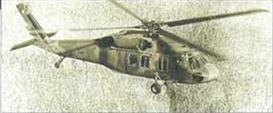

![]()
![]()
![]()
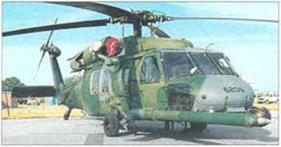


In the technical.1lpl1.1l4.-t of American helicopter designation*, an II prefix mean.* that ihe aircraft has.1 rescue mission The Navy s НН-Л)И and die Coast Guard s almost identical Init simpler HH-riOJ ал* to|wiutth medium – range ivscue craft Tliev were developed front the laniiKis 11-60 Black Hawk and have the same sprightly performance as that familial army helicopter The Rescue Hawk operates from ain, raft-carrier decks, while
thejayluwk dies primarily 1mm land bases (though it lias had modest success аіикпчі (.’oust Guard cutters), lather way. these line helicopters ate a challenge to (light crews When.1 a’seue is under way. the pilot must take oil immediately and put together a lligln plan under pressure while en mute The rescue swimmer ma lave in go into the water to pull out the people Ix’tng rescued In wartime this act of salvation nut he performed
under enemy fire. Fortunately. HH-60 helicopters an* durable and versatile, and have amassed.1 tine record of success
Despite the rescue role ol tin* helicopier, they are often armed with cloor-nxxmted Miniguns Front-line units Hying the helicopter are based as tar afield as Iceland and Japan, providing rescue cover for all the I * armed services.
Lett: Devoid of external tanks and refuelling boom, this early UH-60A is seen in flight prior to conversion to HH-60 standard.
Below: Based m Alaska, those HH-60Gs support rescue operations tor NATO aircraft flying In the area.
|
|||
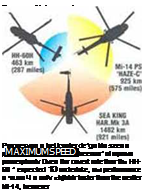 |
|||
|
|
||
|
|||
|
|||
|
|||
|
|||
![]()
![]()
 |
![]()

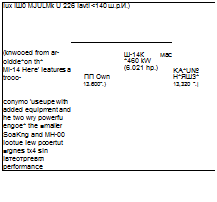
![]()

The caon area nas room to» stretcher cases and tne* attendants, or n rescue team of four who ratntwe the mjwnod aircrew it they ate unoMl to roach the neucooter thnmttNus through injury.
Most hh 60s nave been mooted ftom base UH-60s Improvements nare made tne neteojxer ft» super*» to standard Army mode’s, if bang iibe to operate m a8 weathers
Oie of the ивэдс sbooteatens for lt*i HH-60 was ftvii it ootid bo dopoynd ijucWy 10 op<V! itKir. ii theoftos its foMng «nbLilom and rotors hep it fit rvwv insrt»e«i«ng transport ЦЯ0.1П
![]()
Sikorsky











